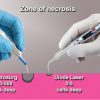Subjective Interpretation Pitfalls With Paper Markings

Robert B. Kerstein, DMD, talks about what all clinicians should know about to the the subjective interpretation of articulation paper markings.

Robert B. Kerstein, DMD, talks about what all clinicians should know about to the the subjective interpretation of articulation paper markings.

Barry F. McArdle, DMD, reviews some of the latest advances in making local anesthesia delivery more comfortable.

Gregori M. Kurtzman, DDS, and David Ouellet, DDS, in part 6 of a 6-part article series, conclude the discussion on how clinicians are able to evaluate, diagnose and treat patients better than ever before.

Jerry Hu, DDS, demonstrates the use of new networking capabilities to enhance the collaboration between doctors and dental laboratory team.

Gregori M. Kurtzman, DDS, in part 4 of a 6-part article series, discusses how clinicians are able to evaluate, diagnose, and treat patients better than ever before.

Gregori M. Kurtzman, DDS, and Mary K. Hughes, RDH, BS, in part 3 of a 6-part article series, will continue the discussion on how periodontal and hygiene treatment has evolved.

Parag Kachalia, DDS, discusses near-infrared transillumination technology that can be helpful in locating caries at an early stage.

Gregori M. Kurtzman, DDS, in the first of a 6-part series, discusses how clinicians are able to evaluate, diagnose, and treat patients better than ever before.

Gregori M. Kurtzman, DDS, and Mary K. Hughes, RDH, in part 2 of a 6-part article series, discuss how periodontal treatment and hygiene in general have evolved.

Gregori M. Kurtzman, DDS, in part 5 of a 6-part article series, discusses how clinicians are able to evaluate, diagnose, and treat patients better than ever before.

Michael D. Scherer, DMD, MS, examines the clinical applications of the latest intraoral optical scanning and in-office 3-D printing technologies and reviews the literature regarding the accuracy of these techniques for replicating the dentition and oral tissues compared to conventional impression techniques. This article is peer-reviewed and available for 2 hours of CE credit. Learning Objectives: After participating in this CE activity, the individual will learn: Clinical applications of current intraoral optical scanning and in-office 3-D printing technologies,. Literature-supported accuracy of these technologies for replicating the dentition and oral tissues compared to conventional techniques..